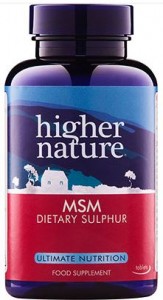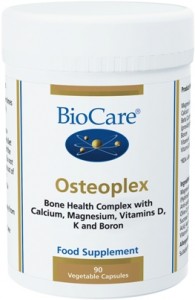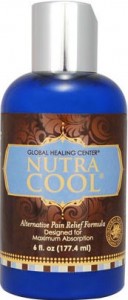Here’s the bad news: there’s no fountain of youth and, equally, there’s no silver bullet for ageing. As time goes on, we all get older and we all physically age – it’s an inevitable, irreversible fact of life. However, the way you live your life can help minimize the effects of the ageing process as much as is possible. How you live your life – exercising regularly, adopting a good diet and possibly taking the right supplements – can keep your body as fighting fit as it can be while the years pass. To that end then, if you want to call this ‘anti-ageing’, there are things you can do to put it into action.
To start with, your approach should be one of psychology; of perspective. Don’t look on your body as an ageing mass of organs and limbs held together by ever more sagging skin; instead love your body, as the saying goes. Look on it as the well-oiled, incredible machine it is. Many people think of their homes or their cars as their pride of joy; they want them to look as impressive and pleasant and operate as effectively as possible. Why shouldn’t you do the same when it comes to your own body?
An Anti-Ageing Diet
So what does this all mean when it comes to diet? Simple: good nutrition. A person a few years older than someone else is likely to possess a digestion system that’s not quite as efficient. But often this is as much down to diet and lifestyle as to age; too many years of not eating as healthily as you might and not getting all the vitamins, minerals and nutrients possible – and, yes, not getting as much physical activity as you can; no doubt not as much as your youngers self.
But the good news is that exercising more and making positive changes to your diet go hand-in-hand. The more active you are the hungrier you’ll be and the bigger your appetite, while the better you eat the more energetic and positive you’ll feel and, thus, the more up for getting outside and exercising regularly you’ll doubtless become.
As you may have expected, high-quality, organic fruits and vegetables are the way forward, along with healthy proteins and fats, a number of dairy products, whole grain foods and often less salt1.
More specifically, here are some great food ideas for introducing more nutrition to your diet:
- Blueberries – truly tasty and packed full of Vitamins C and E, which are antioxidants to combat the likes of harmful free radicals
- Broccoli – once declared the healthiest food of all (however that’s actually measured, of course), this vegetable’s chock-full of vitamins, antioxidants and fibre
- Fatty fish – we’re talking the likes of sardines, salmon and mackerel here, all of which are high in Omega-3 fatty acids, which are excellent for helping to stave off the threat of heart disease and stroke
- Fibre – it’s important to get enough fibre generally from your diet to lower blood pressure, inflammation and cholesterol and reduce the risk of diabetes, as well as ease constipation; that means, in addition to vegetables, throwing into the mix foods like whole grains, bran-based cereals and brown or wholegrain rice
- Nuts – also packed with fibre, as well as protein, healthy Omega-3 fatty acids and unsaturated fats, nuts make for very heart-healthy food
- Olive oil – research from as recent as 2013 suggests that those who regularly consume extra virgin olive oil may see a major reduction in ‘bad’ cholesterol (LDL), while their health-enhancing ‘good’ cholesterol (HDL) levels may rise
- Tomatoes – blessed with lycopene (the phytochemical that makes them red), adding to your diet enough tomatoes may help to prevent the development of both prostate and lung cancer; cooking or mashing your tomatoes may even release more lycopene, experts believe
- Yogurt – often a good source of calcium, yoghurt is a food whose contents help to reduce bone-loss as you age; if it’s fortified in Vitamin D, then all the better.
Finally, don’t overlook the incredible health benefits – and, thus, importance to anti-ageing – of water. It may not seem that exciting or exotic, but water remains the most important thing we can put in our bodies (so long as it’s pure and filtered), basically because our bodies are so reliant on it; up to 60% of the human body’s actually made up of water. For instance, drinking more water than you usually do may result in some simple but stark, positive benefits; such as feeling less fatigued, suffering fewer headaches, being able to concentrate for longer and feeling less constipated1. Why? Because these things are all symptoms of dehydration – so stay hydrated, whatever your age!
Anti-Ageing Supplements
As has been hopefully made clear, altering your diet and undertaking decent, regular exercise can work wonders when it comes to staving off the full effects of physical ageing (and the ailments that come with it). Yet, for some, doing these two things isn’t as easy as for others; plus, other people may wish to go the extra mile. In both cases, taking the supplementation route for anti-ageing’s highly advised. The following natural supplements – and many more – can be bought through The Finchley Clinic:
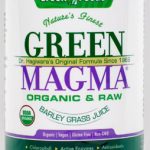 Green Magma (Barley Grass Powder) – a ‘green food’ alkalising powder, this product comprises more than 20 enzymes, as well as a whole host of vitamins, minerals and amino acids, ensuring it aids digestion and detoxification.
Green Magma (Barley Grass Powder) – a ‘green food’ alkalising powder, this product comprises more than 20 enzymes, as well as a whole host of vitamins, minerals and amino acids, ensuring it aids digestion and detoxification.
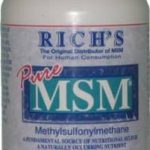 MSM – methylsolfonylmethane (MSM) is believed to help skin, hair and nail growth, enhance connective tissues and joint function, improve enzyme activity, maintain hormone balance and keep the immune system functioning effectively.
MSM – methylsolfonylmethane (MSM) is believed to help skin, hair and nail growth, enhance connective tissues and joint function, improve enzyme activity, maintain hormone balance and keep the immune system functioning effectively.
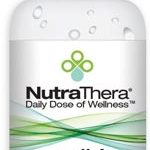 ORËÁ (formerly ZNatural) – taken daily, this supplement can successfully detoxify and cleanse the body, permeating the kidneys and other organs, blood, glands and cellular tissue and supporting the body’s own natural immune defence and disease resistance systems.
ORËÁ (formerly ZNatural) – taken daily, this supplement can successfully detoxify and cleanse the body, permeating the kidneys and other organs, blood, glands and cellular tissue and supporting the body’s own natural immune defence and disease resistance systems.
Reference:
1. Donovan J. ‘Best Foods for Your Anti-Ageing Diet’. Webmd.com. http://www.webmd.com/healthy-aging/guide/anti-aging-diet#1. Last reviewed: 24 Aug 2016.


